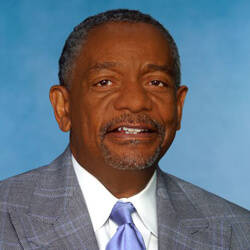In Friday’s edition of The Mount Airy News, I wrote a column about what the ultimate Duke-Carolina basketball game might look like.
I put together a first team and a second team of UNC players from my own viewership (which dates back to 1982). So sorry to greats like Phil Ford and Mike Gminski, but I never saw them play in college and can’t comment on them myself.
To see my UNC picks, here is a link to that column: https://bit.ly/2ANJpMh.
Duke is a harder team to pick. Every single player on the Carolina roster played at least two seasons in light blue. However, Duke has become the leader of the one-and-done era. So many great athletes have left after a lone season. How do you compare that to a Trajan Langdon who was good for a long time, but never amazing?
So for my Duke team, to even be considered on my first or second team, a one-and-done player had to have performed well enough to earn All-America status. This means six players in the past seven seasons.
Duke
First Team
PG: Bobby Hurley, Jay Williams
SG: Johnny Dawkins, J.J. Redick, Trajan Langdon
SF: Grant Hill, Shane Battier
PF: Danny Ferry, Zion Williamson
C: Christian Laettner, Sheldon Williams, Carlos Boozer
Second Team
PG: Chris Duhon, Nolan Smith
SG: Jon Scheyer, Luke Kennard
SF: Kyle Singler, Chris Carrawell, Jabari Parker
PF: Mark Alarie, Mason Plumlee, Marvin Bagley III
C: Elton Brand, Vernon Carey Jr.
First Team
Hurley is the all-time NCAA leader in assists with 1,076. He also tallied 1,731 points, 202 steals and 306 rebounds. People forget he also shot 40.5% from deep despite a shaky freshman year.
Jay Williams scored 2,000 career points in only three seasons to go with 644 assists, 395 rebounds and 235 steals. He shot 39.3% on 3’s and 51.4% on 2’s. His 313 3’s made are ninth in ACC history in just three seasons; he is 12th in steals in three seasons and was on pace to be in the top four in both categories with a senior year.
Dawkins held Duke’s career scoring record for years until J.J. Redick came along. He finished with 2,556 points (without a 3-point line for three seasons), plus 555 assists, 536 boards and 168 steals.
Redick scored 2,769 points, aided by an ACC-record (and third in NCAA history) 457 3-pointers at a rate of 40.6%. He also shot 91.2% at the foul line, making 662 (good for fifth-best in ACC history).
Trajan Langdon scored 1,974 points with 42.6% shooting from deep, 48.6% on 2’s, 86.2% from the line and 342 career 3’s made.
Grant Hill had 1,924 points, 769 rebounds, 461 assists, 218 steals and 133 blocks. He shot 53.2%, including 61.1% in Duke’s 1991-92 title year. He hardly shot any 3’s until his senior year when he suddenly made 39 out of 100. He was ACC player of the year in 1994 and the NABC defensive player of the year in 1993 (2.5 steals and 1.4 blocks).
Shane Battier was a three-time NABC defensive player of the year. He was co-player of the year with UNC’s Joseph Forte in 2001 — he should have won it in 2000 as well, but Coach K lobbied all season for folks to pick senior Chris Carrawell (and it worked).
Battier finished with 1,984 points, 887 boards, 266 steals, 254 blocks and 239 assists. He is sixth in ACC history in steals and 10th in blocks and the only player in league history to top 250 in both categories.
Ferry became a good player as a junior and then to great as a senior, scoring 22.6 points, shooting 54.4% on 2’s and 42.5% on 3’s to go with 7.4 rebounds, 4.7 assists and 1.6 steals. He is 12th in ACC history in scoring and 10th in rebounding.
Zion Williamson gets a spot despite only one season because he shot an astounding 74.7% on his 2-point tries. He averaged 22.6 points, 33.8% from deep, 8.9 boards, 2.1 steals and 1.8 blocks. Quite a year.
Laettner was the leader on a team that went to three straight NCAA title games, winning twice. He scored 2,460 points with 1,149 boards, 243 steals and 145 blocks. As a senior he shot 58.0% on 2’s and a whopping 55.7% on 3’s.
He is fifth in ACC history in scoring, sixth in boards, ninth in steals, third in free throws made, and stands second in true shooting percentage (which weights 3’s higher) to fellow Blue Devil Carlos Boozer.
Sheldon Williams was a two-time NABC defensive player of the year. He scored 1,928 points with 1,262 rebounds, 422 blocks, 161 steals, while shooting 57.2% from the field. He is second in ACC history in rebounds and third in blocks.
Carlos Boozer leads the ACC in true shooting percentage (tracked since 1985). He is second to Antawn Jamison in career win shares for any early-entry candidate for the NBA Draft. Tracked since 1985, he is the ACC’s field goal leader at 63.1% (well ahead of Wake’s Eric Williams at 59.3%).
Second Team
Combo PG/SG Nolan Smith was hard to leave off the first team. He was the 2011 player of the year (20.6 points, 50.1% shooting on 2’s, 35% on 3’s, 5.1 assists, 4.5 boards, 1.2 steals). He finished with 1,911 points, 406 assists and 398 boards.
Chris Duhon had 1,268 points, 819 assists, 300 steals and 489 rebounds. He made the ACC all-defensive team twice and was fourth in ACC history in steals.
Jon Scheyer scored 2,077 points and played PG his senior year. He shot 38% from 3’s three straight seasons and 86.1% at the line.
Luke Kennard’s sophomore campaign saw him scored 19.5 points on 52.5% shooting on 2’s, 43.8% on 3’s and 85.6% at the line to go with 5.1 boards and 2.5 assists.
Kyle Singler scored 2,392 points (6th in ACC history) with 1,015 boards (18th), 293 assists, 168 steals and 107 blocks. He is fourth in career win shares since 1995.
Carrawell was ACC player of the year and an all-defense performer in 2000. His senior year he averaged 17 points, 6 boards, 3 assists, 1 steal and 1 block.
Parker was a post player for Duke, but showed enough outside game to put him on the team at SF for my purposes. In 2014 he averaged 19.1 points on 50.4% for 2’s and 35.8% from deep with 8.7 boards.
Alarie scored 2,136 points, shooting 55.0% and 79.7% at the line. He had 833 boards, 121 steals and 104 blocks.
Mason Plumlee totaled 1,384 points (on 57.4% shooting), 1,088 boards, 115 steals and 199 blocks.
Bagley in 2018 averaged 21.0 points on 64.7% shooting on 2’s and 39.7% from deep. He also collected 11.1 rebounds.
Before he played his first game, Brand was called the best post player he’d ever recruited by Coach K. Brand scored 972 in just a season and a half on 61.2% shooting with 8.9 rebounds, 1.4 steals and 1.9 blocks.
Jahlil Okafor in 2015 scored 17.3 points on 66.4% shooting with 8.5 boards and 1.4 blocks.
Current rookie of the year Vernon Carey Jr. averaged 17.8 points., 8.8 boards, 1.6 blocks and 0.7 steals — in only 25 minutes played. He shot 59.0% on 2’s and 38.1% on 3’s.
Who Wins?
In a hypothetical Duke/UNC game, here are how the matchups would shake out.
At the PG spot you would have Hurley and Williams against Ty Lawson/Ed Cota. The edge goes to Duke.
At SG, Dawkins couldn’t stop Michael Jordan in the 1980s and can’t do it here. Edge: UNC.
Jerry Stackhouse and George Lynch are good, but Battier and Hill are special. Edge: Duke.
At PF are Antawn Jamison, Rasheed Wallace and Brice Johnson against Ferry and Zion. Rasheed might be the only one who could slow Zion down. And Jamison was a beast. Edge: UNC
At center is Tyler Hansbrough, Sam Perkins and Brad Daugherty against Laettner, Sheldon and Boozer. Hansbrough couldn’t dominate against the muscular Williams, and Laettner’s long shooting is a matchup nightmare. Edge: Duke.
With three of the five spots going to Duke, I have to give the win to the Blue Devils, but we all know to never count out His Airness.
I give the Second Team honors to UNC because of all the experience that squad would have over Duke’s one-and-doners.
Alright, 2K Sports, give me a video game version so we can settle this once and for all.
Credit: Source link






























